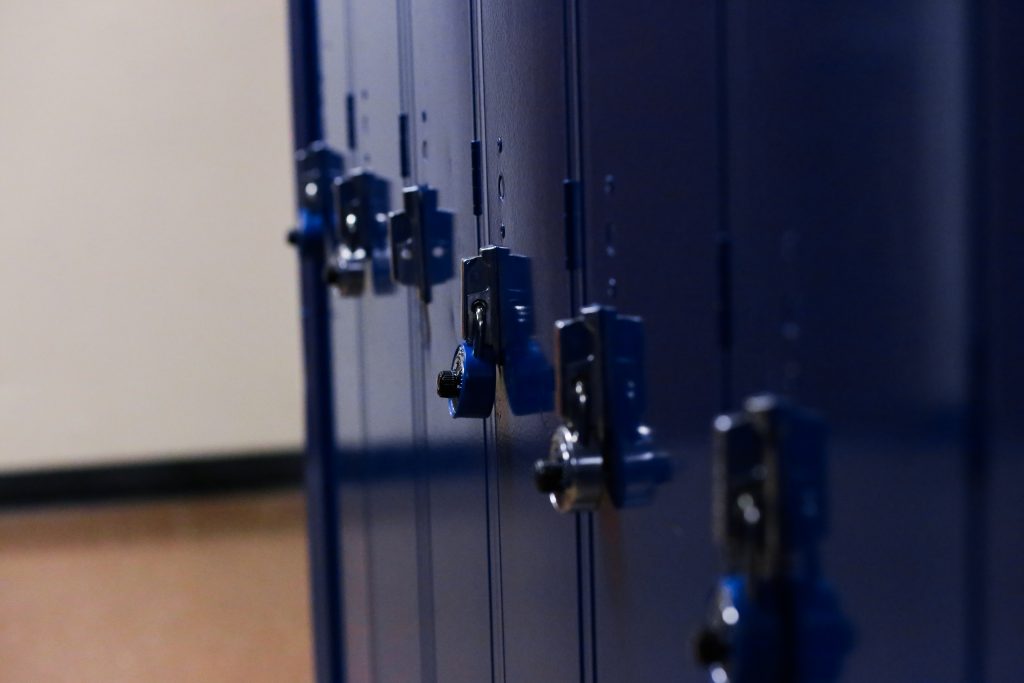A look into Wisconsin’s academic achievement gap
Photographed by Katie Scheidt
“When [Sammy] was in third grade, the teacher that he had was not paying attention to him. He was an advanced student. It’s like they would just give him something for him to learn, but he already knew the stuff — pretty much all the stuff,” says Gabriela Garduño, a Madison parent.
Sammy’s mom was very involved, and she talked to Sammy’s teachers many times about giving him extra homework. Once she realized the school wasn’t doing all they could to help Sammy, she had to think of something different. Garduño took both of her sons, Sammy and Danny, out of Madison public schools the following year, frustrated by what she perceived as a lack of effort to educate her children. Sammy is currently in fifth grade at Lighthouse Christian School, Dane County’s first and only voucher school.
Wisconsin’s academic achievement gaps, which disproportionately affect students of color, have been persistent since long before Sammy was born. School districts continually leave parents frustrated and in some cases, searching for a way out, year after year.
“It seems like the structure is falling apart,” Garduño says about her son’s experience in the public schools. “And it seems like it’s not changing for the good … And it is really terrible, because the kids go by and pretty soon they are going to be in high school. By that time, they have to be ready and prepared for college.”
Tests show large gaps between white students compared to Black and Hispanic students since the 1990s, according to the Nation’s Report Card. In 1990, among eighth graders, 5 percent of Black students, 18 percent of white students and 7 percent of Hispanic students were at or above proficiency in math.
Fast forward to 2015, and, among eighth graders, 13 percent of Black students, 43 percent of white students and 19 percent of Hispanic students were at or above proficiency in math. According to the same report, in 2015, the percentages of white and Black eighth grade students who performed above the basic or proficiency benchmarks were lower than in 2013.
The racial gap in average ACT scores, a standardized test required for many college applications, has gotten worse since 2007. All high school juniors had the opportunity to take the ACT in the 2014-2015 school year. The maximum score on an ACT is 36. In 2007, the average score was 17.4 for Black students. White students scored an average of 22.8. During the 2015-16 school year, the average score for Black students was 15.8, and white students scored an average of 21.1 out of 36, according to a report from Wisconsin’s Department of Public Instruction.
The Wisconsin Center for Investigative Journalism reported that Tony Evers, Wisconsin’s superintendent of public instruction, has described the state’s achievement gap as “extraordinarily horrible.”
Parent choice
For parents in Wisconsin, trying to find the best school for their children to attend can be a complicated decision, especially when faced with such disparities in education outcomes.
Low-income parents and parents of color in particular may not have many school options to choose from. Their children are forced to go to their neighborhood schools, which may be failing to educate students. Many white families who have money have more of an opportunity to buy into neighborhoods with the best schools or can afford private schools or home schooling, emphasizes Garduño.
After being unsatisfied with her children’s education, Garduño desperately looked for better options for her elementary-aged boys. Because her family was low-income, they were not able to afford private schools, and it would be too expensive to move to a neighborhood with a better school.
“It was really hard for me to move because I own my house. So it’s not easy for me to say, ‘Oh, I’m going to sell my house, and buy another house on the other side of the city’ because they are double expensive than where I live at right now,” Garduño says.
Garduño says she felt stuck, until she was able to find the opportunity of a voucher for her boys to attend Lighthouse Christian School. The private school first joined the taxpayer-funded Wisconsin Parental Choice Program in 2013. It allows students who meet income-eligibility guidelines to attend private, magnet and charter schools or be tutored. According to the Wisconsin State Journal, the program is controversial because some believe that vouchers take taxpayer money away from the public schools.
But Garduño thought that this was a chance for change. She wanted something better for her children and after her efforts, she didn’t see the public school providing that. “So there was a great opportunity when I heard families like low-income, have the possibility to go to private school — that something might be different,” Garduño says.
Howard Fuller, a longtime education reformer and past superintendent of the Milwaukee Public Schools, was among those pushing for parental choice in Milwaukee when state legislators approved the first program in the country in 1989. According to his book, “No Struggle, No Progress: A Warrior’s Life from Black Power to Education Reform,” Fuller believes that that in some cases, parent choice is crucial for African-American success.

“The fundamental reason why I support [school choice] for low-income and working-class parents is because I don’t think that we ought to have an America where only those of us with money have the ability to choose the best school for our children,” Fuller says.
“Parent choice is widespread, unless you’re poor,” Fuller says. He adds that for him, “the issue in the country is not whether or not we should have parent choice. The issue is who should have it.”
Fuller has seen firsthand providing the opportunity of parent choice can work.
He was born during the Jim Crow era. His mother and grandmother wanted Fuller to understand the necessity of education. According to his book, he thinks he was able to enroll in a Catholic school because of a program for low-income students.
“To this day, I’m grateful that someone’s philanthropy made it possible for my mother to choose the education she believed was best for me,” Fuller writes in his book.
Fuller points out that some argue the academic achievement gap should actually be called “the opportunity gap.” Using the term “achievement gap” places the blame on the students and not the system itself. Many low-income students and students of color simply don’t have the same opportunities as many white families with resources.
“I wish other students can have the opportunity to go [to Lighthouse Christian School], because I see there that the people care about the students, whether they are an up level or a low level,” Garduño says.

Cancer of low expectations
In public schools, many students of color do not represent the majority taking advanced classes — something else keeping the achievement gap in place.
“The achievement gap is noticing that there isn’t a lot [of] minorities in honors and [advanced placement] classes,” says Amie Kabera, a junior at a Madison high school and just one of three students of color in her advanced placement, or AP, English class.
According to reports from Wisconsin’s Department of Public Instruction, in the 2006-07 school year, 1.8 percent of Black students participated in AP exams — a 3.4 percentage point increase in eight years, compared to 8.8 percent of white participants and 3.7 percent of Hispanic participants. in the 2014-15 school year, 5.2 percent of Black students and 8.2 percent of Hispanic students participated in AP exams, compared with 16.4 percent of white students.
“I think students of color are nervous about these classes … counselors and principals or teachers never tell them they have what it takes to succeed and how they’re smart. If they don’t hear it, they don’t believe it,” Kabera says.
Madeline Hafner, executive director for the Minority Student Achievement Network, or MSAN, part of the Wisconsin Center for Education Research at UW-Madison, agrees. “There seems to be this objective access point,” she says. “So a recommendation from a teacher, having a specific GPA — there are what we would call these objective things … I think one of the things that we do to prevent access is that we believe in these objective places.”
According to the MSAN website, the network’s mission is to understand practices and structures that keep racial opportunity or achievement gaps in place.
“Do teachers really believe that there is a population of African-American students who aren’t smart enough to understand the complexity of an honors curriculum? And if that’s what you really, really believe, then that’s another conversation,” says Hafner, who has been working for MSAN for 10 years.
Achievement Gaps = Social Justice Issue
Social justice issues have a direct impact on education issues. “Education reform is one of the most crucial social justice issues of our time,” Fuller writes in his book.
Education is an avenue that can make a child’s life better. According to Fuller’s book, education can be a rescue mission for poor children. When you educate children it can improve their life chances, and if a lot of kids have that happen, it can ripple out to the greater community.
“How we see how students are targeted, just in terms of academic expectations … It’s not about overt racism; it’s that covert institutional piece,” Hafner says.
How to spark change?
It is difficult to pinpoint just one thing that can help Wisconsin move in a direction that would reduce and eventually eliminate the academic achievement gap. There are, however, efforts that have a chance of working if they have a large backing. Fuller, among others, believes there needs to be a greater sense of urgency when it comes to addressing this.
“When it just comes to education per se, we should provide students with a 21st century education and not a 20th century education. But, at the same time, for poor children, just making changes in school or education environments is not enough,” Fuller says.
One of these 21st century strategies is “personalized learning.”
“I know that one of the 21st century skills kids would need — it’s not sitting and being attentive — it’s about collaborating with others and learning how to love to learn, how to solve a problem. And so I think personalized learning is one way of doing that,” Hafner says.
But Hafner worries about adequate funding and feels nothing may change without it. “There has to be an increase in allocation to spending in our public schools, and that doesn’t mean that I don’t think roads are important,” Hafner says.
She also sees an opportunity in visiting the classrooms of other teachers in order to learn which approaches are working.
Fuller believes educated individuals have a responsibility to make change happen.
“If you believe something is wrong, you have a responsibility to do something about it,” he says.

Taylor Kilgore is a senior graduating in December 2017. Communications has always been her passion. She is studying journalism, with a strategic communications track. Taylor is native to Madison.
Even though there are many opportunities here, she would hope to relocate somewhere new. Her dream job is not yet set in stone, however, wherever she works, she just wants to be happy and make a difference.
She is most interested in the business of magazines, public relations and the media in general. She currently works for Simpson Street Free Press, a local non-profit that uses journalism to teach literacy skills to 3rd through 12th graders. She is not only an editor and program coordinator but serves in a PR role too. She is currently thinking of next steps after graduation.

